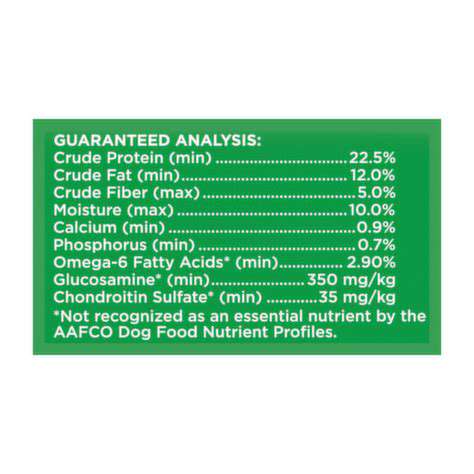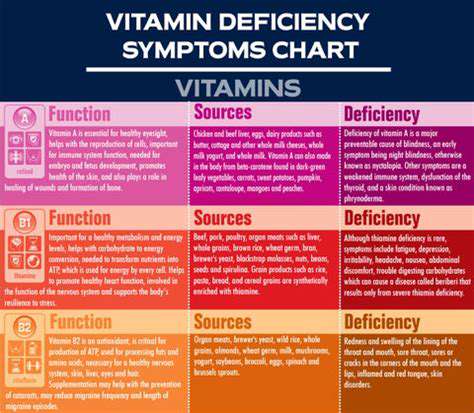AAFCO Guidelines: Understanding Pet Food Standards
A fundamental aspect of AAFCO standards lies in the concept of nutritional adequacy. This means the pet food must contain the essential nutrients in appropriate amounts to support the life cycle of the pet. These nutrients include proteins, fats, carbohydrates, vitamins, and minerals, each playing a crucial role in maintaining health, growth, and overall well-being.
AAFCO sets minimum standards for these nutrients, which vary depending on the life stage of the animal (puppy, adult, senior) and the specific species (dog, cat, etc.). Meeting these minimum requirements is essential to prevent nutritional deficiencies and maintain optimal health in pets.
Life Stage Specificity in AAFCO Guidelines
AAFCO standards acknowledge that the nutritional needs of pets change throughout their lives. Different life stages, like growth, maintenance, and reproduction, require different nutrient profiles. Therefore, AAFCO guidelines consider these variations to ensure the food is suitable for the specific needs of the animal at each stage.
For instance, puppy food is formulated to support rapid growth and development, while adult food is designed for maintaining optimal health. Senior pet food often contains adjusted levels of certain nutrients to support the changing metabolic needs of older animals. This life-stage-specific approach is critical for the long-term health and well-being of pets.
Minimum Requirements and Guaranteed Analysis
A key component of AAFCO standards is the Guaranteed Analysis. This is a crucial tool for pet owners to understand the nutrient content of the food. The guaranteed analysis specifies the minimum percentage of certain nutrients, like protein and fat, and the maximum percentage of others, like fiber. This allows pet owners to compare different products and choose one that best meets their pet's needs.
The minimum requirements outlined in the guaranteed analysis ensure that the product contains a certain level of essential nutrients. Understanding these minimums is essential for pet owners to ensure that the food they are purchasing meets their pet's nutritional needs.
AAFCO and the Role of Research
AAFCO standards are not static; they are constantly being updated and refined based on the latest scientific research. Scientists and researchers play a vital role in providing data and insights that inform the development and revisions of these guidelines. This ensures that the standards remain relevant and effective in supporting the health and well-being of pets.
Through ongoing research and development, AAFCO strives to ensure that pet food standards reflect the most current scientific understanding of animal nutrition. This commitment to scientific rigor is essential for the long-term health of pets.
AAFCO's Impact on Pet Food Industry
AAFCO standards have a significant impact on the pet food industry, driving manufacturers to adhere to rigorous nutritional guidelines. These standards create a level playing field, ensuring that pet owners have access to a wider range of products, all of which meet a minimum standard of quality and nutritional adequacy. This also helps to protect the health of animals and helps to build consumer confidence in pet food.
The standards influence the formulation, production, and marketing of pet food products, encouraging the development of nutritionally balanced diets. In turn, this benefits pet owners by providing a greater understanding of the nutritional quality of the pet food they purchase for their beloved companions.
AAFCO's Role in Defining Nutritional Profiles

AAFCO's Standards for Pet Food
The Association of American Feed Control Officials (AAFCO) plays a crucial role in setting standards for pet food ingredients and nutritional profiles. These standards are designed to ensure that pet food products meet minimum nutritional requirements for the specific life stages and breeds of animals they are intended for. AAFCO's guidelines cover a wide range of nutrients, including protein, fat, fiber, vitamins, and minerals. This ensures a consistent level of quality and safety in the pet food industry.
AAFCO's rigorous standards aim to prevent the sale of pet food products that are nutritionally inadequate or potentially harmful to animals. By setting these standards, AAFCO aims to protect the health and well-being of pets across the country. This comprehensive approach to pet food regulation is essential for responsible pet ownership and veterinary care.
Impact on Pet Health
AAFCO's standards significantly impact the health of pets by ensuring that commercial pet food meets the minimum nutritional needs for various life stages of dogs and cats. A properly formulated diet, based on AAFCO guidelines, can help prevent nutritional deficiencies, support healthy growth and development, and maintain optimal overall health throughout a pet's life. This is particularly important for young animals, pregnant females, and senior pets.
These standards contribute to the well-being of pets by helping to reduce the risk of diseases and health problems that can arise from nutritional deficiencies or imbalances. A diet that adheres to AAFCO standards can promote stronger immune systems, healthier coats, and more vibrant energy levels in pets.
AAFCO's standards also provide a framework for pet owners to make informed choices about their pets' diets. By understanding the nutritional requirements outlined by AAFCO, pet owners can select foods that support their pets' specific needs and help maintain their long-term health.
AAFCO's Testing and Evaluation Procedures
AAFCO utilizes rigorous scientific methods and testing procedures to evaluate pet food products. These procedures often involve analyzing the ingredients and determining their nutritional content to ensure they meet the specified standards. The meticulous testing ensures that the nutritional claims made by manufacturers are accurate and reliable.
The organization employs a variety of analytical techniques, including chemical analyses and biological evaluations, to assess the nutritional value of pet food. This comprehensive evaluation process helps maintain the integrity of the pet food industry and safeguards the health and welfare of pets.
Beyond the Basics: Understanding the Importance of Ingredient Lists

Beyond the Fundamentals of Data Analysis
Data analysis is a critical skill in today's world, but it goes far beyond simply crunching numbers. True mastery involves understanding the context, identifying patterns, and drawing insightful conclusions that can inform strategic decisions. This deeper understanding requires a sophisticated grasp of the underlying principles and methodologies, moving beyond the basic calculations and into the realm of interpretive analysis.
Learning the tools and techniques of data analysis is important, but the ability to ask the right questions and interpret the results is equally, if not more, crucial. A strong foundation in data analysis allows you to tackle complex problems, identify trends, and ultimately, drive positive change.
Exploring Different Data Types
Data comes in various forms, each requiring a unique approach to analysis. Understanding these different types – structured, semi-structured, and unstructured – is essential for choosing the right tools and techniques for your project. Each type presents its own set of challenges and opportunities.
For example, structured data, often found in databases, lends itself to straightforward analysis using readily available tools and techniques. In contrast, unstructured data, found in text or images, demands more sophisticated methods and often requires specialized expertise.
The Significance of Data Visualization
Effective data visualization is key to transforming complex datasets into easily digestible insights. Clear and compelling visualizations can communicate complex information in a way that is accessible to a broad audience. Visual representations allow for patterns and trends to emerge, facilitating quicker understanding and decision-making.
Leveraging Statistical Methods
Statistical methods provide the framework for rigorously analyzing data and drawing meaningful conclusions. By applying statistical tests and models, we can quantify the relationships between variables, identify significant patterns, and measure the reliability of our findings.
This involves a range of techniques, from basic descriptive statistics to more advanced inferential methods. A good understanding of statistical significance, hypothesis testing, and regression analysis is vital for making data-driven decisions.
The Role of Data Ethics in Analysis
As data analysis becomes increasingly prevalent, it's crucial to consider the ethical implications of our work. Data privacy, bias in datasets, and the potential for misuse are all crucial factors that must be addressed. Responsible data analysis necessitates a commitment to ethical considerations, transparency, and accountability in every step of the process.
Maintaining data integrity and ensuring fairness in the application of analytical findings are paramount. Ethical considerations must be integrated into the entire data analysis lifecycle, from data collection to interpretation and communication of results.
Practical Applications of Advanced Analysis
The power of advanced analysis extends across a wide spectrum of industries and applications. From financial modeling and risk assessment to personalized medicine and targeted marketing campaigns, data analysis is transforming the way we approach problem-solving and decision-making.
Real-world applications demonstrate the potential of data analysis to drive innovation, improve efficiency, and ultimately shape a more informed and data-driven future. The ability to analyze data effectively and ethically is becoming increasingly critical across diverse sectors.











